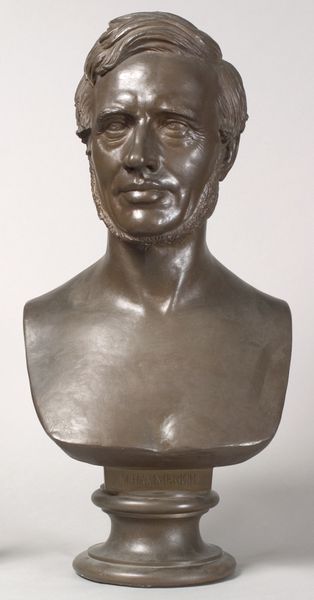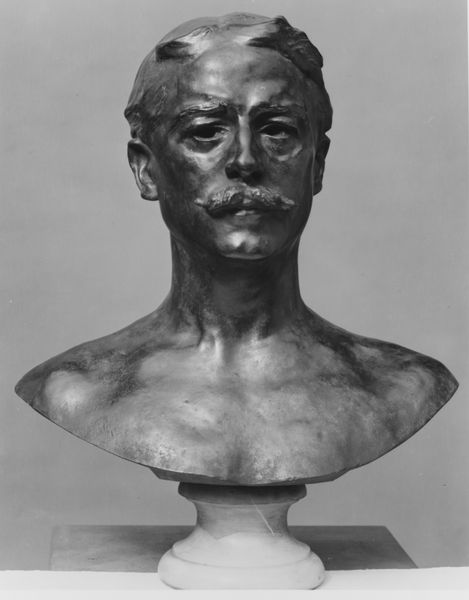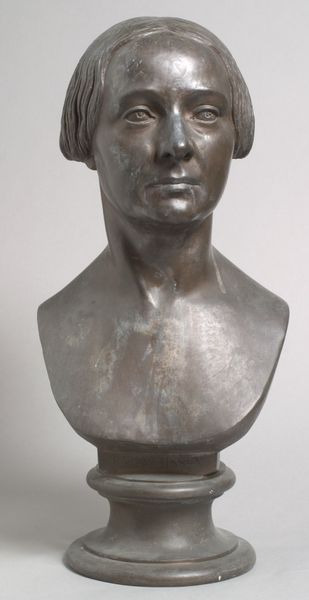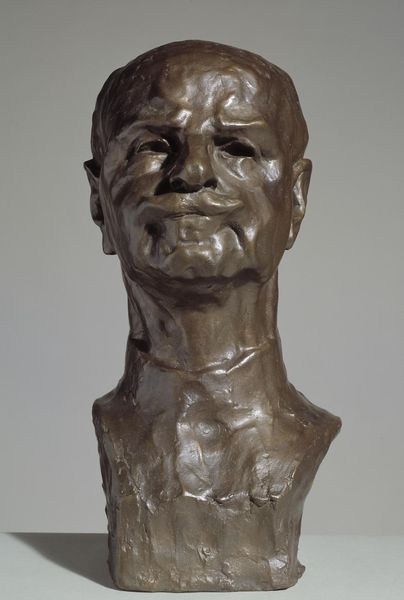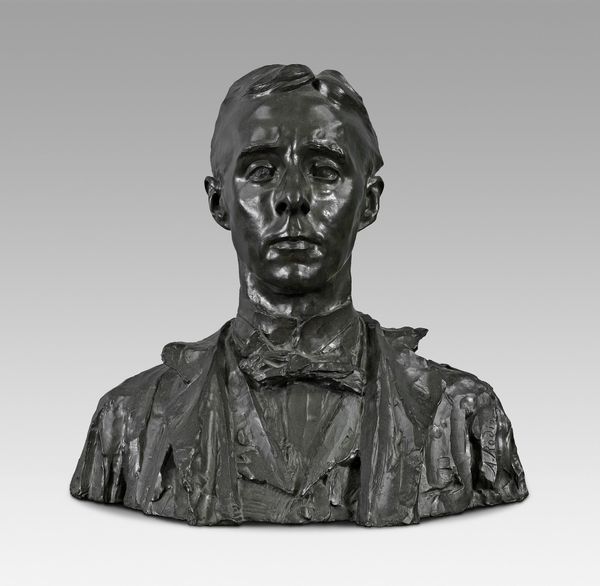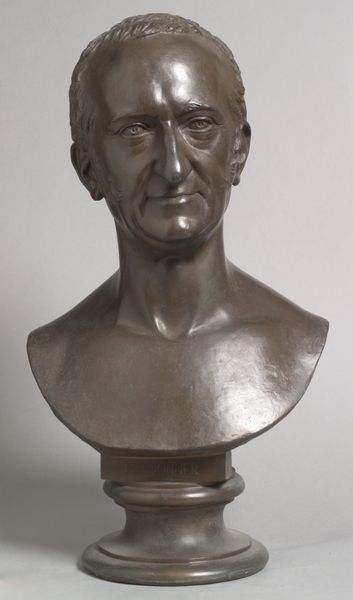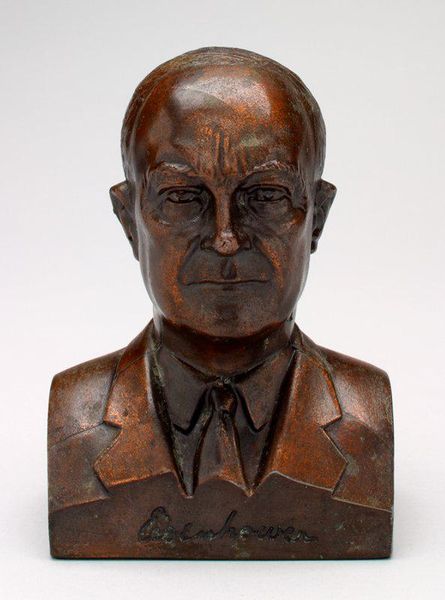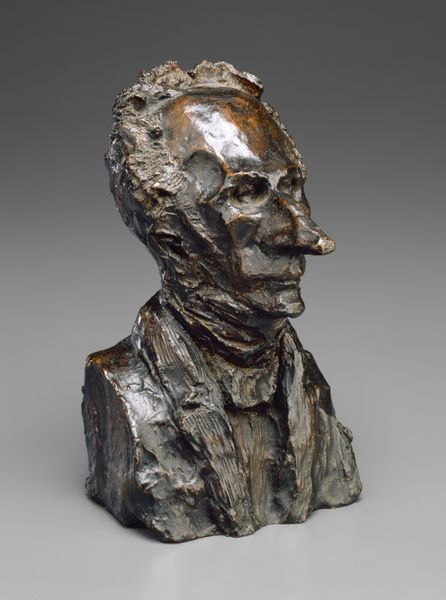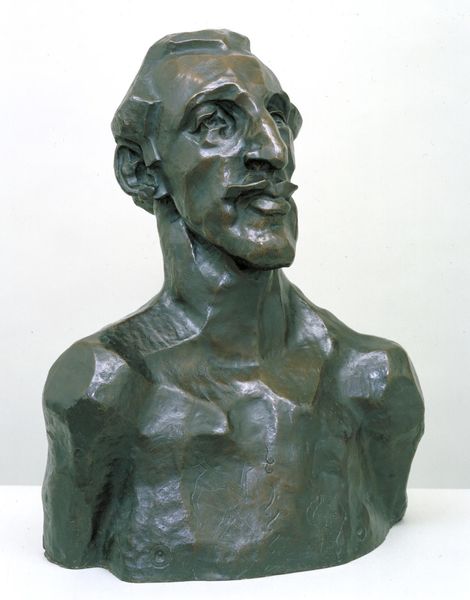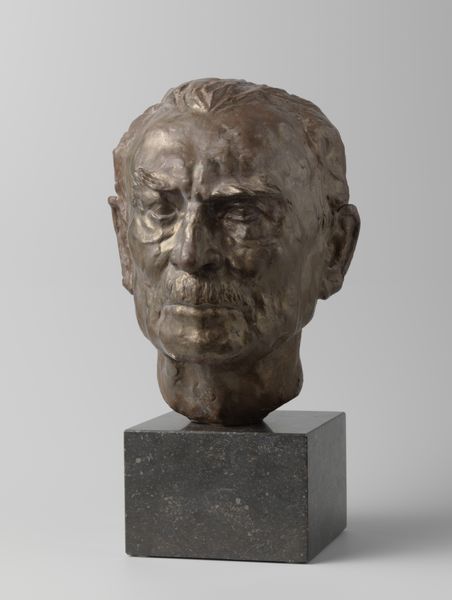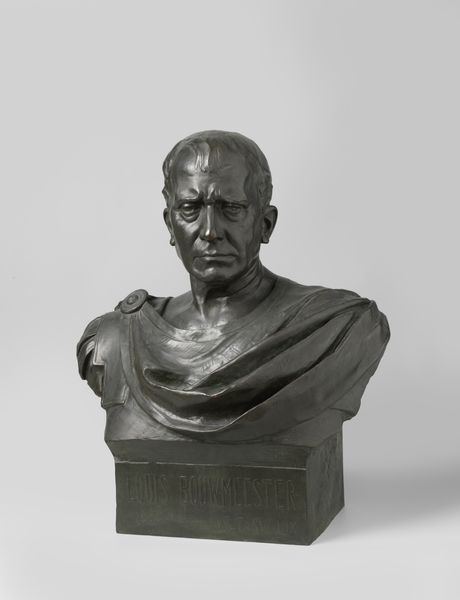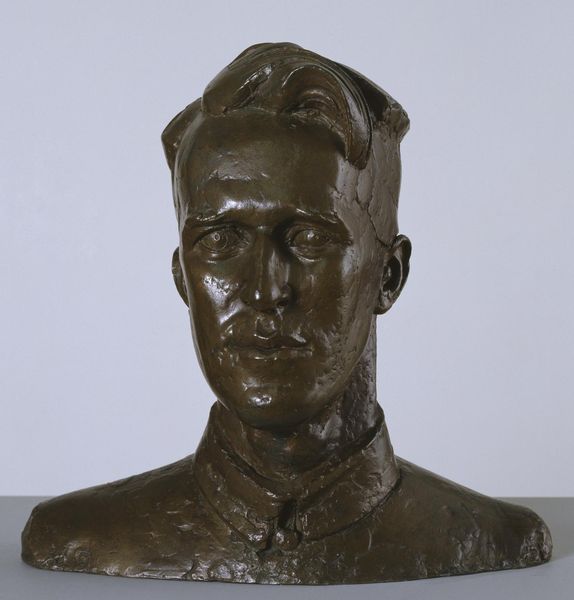
bronze, sculpture
#
portrait
#
sculpture
#
bronze
#
figuration
#
sculpture
#
decorative-art
#
modernism
#
realism
Dimensions: Height: 23 in. (58.4 cm)
Copyright: Public Domain
Editor: Right in front of us we have Auguste Rodin's 1909 bronze sculpture, Thomas Fortune Ryan, at the Met. The way light catches those intentional, rugged textures is truly captivating, yet there is also an undeniable gravitas in the subject's expression. How do you interpret this portrait through the language of form? Curator: Focusing solely on form, note how the rough modeling captures an essence of vitality. It is through Rodin's technique of contrasting smooth and heavily worked surfaces that this vitality emerges. Observe how light interacts with these textural variances, creating dynamism across the composition. Does the conventionality of the subject’s attire stand in tension with the radical modernity of Rodin's sculptural technique? Editor: That contrast is very evident now that you point it out. It seems almost paradoxical to see such avant-garde treatment applied to a rather traditional subject, clothed in a conventional suit. Does that, perhaps, disrupt the reading of the portrait as simply a commemoration of the sitter? Curator: Precisely! Consider the assertive gaze and formal attire balanced against the tactile immediacy of the modeling. Are we meant to consider psychological depth here? The expressiveness that emerges from this juxtaposition allows Rodin to investigate representation itself, challenging established modes. Editor: I hadn’t considered the tension between traditional and modern approaches like that. It offers such a different way to engage with the sculpture, focusing purely on the artist’s method. Thank you. Curator: Indeed. Concentrating on the interplay of surface and form brings new perspective.
Comments
No comments
Be the first to comment and join the conversation on the ultimate creative platform.


